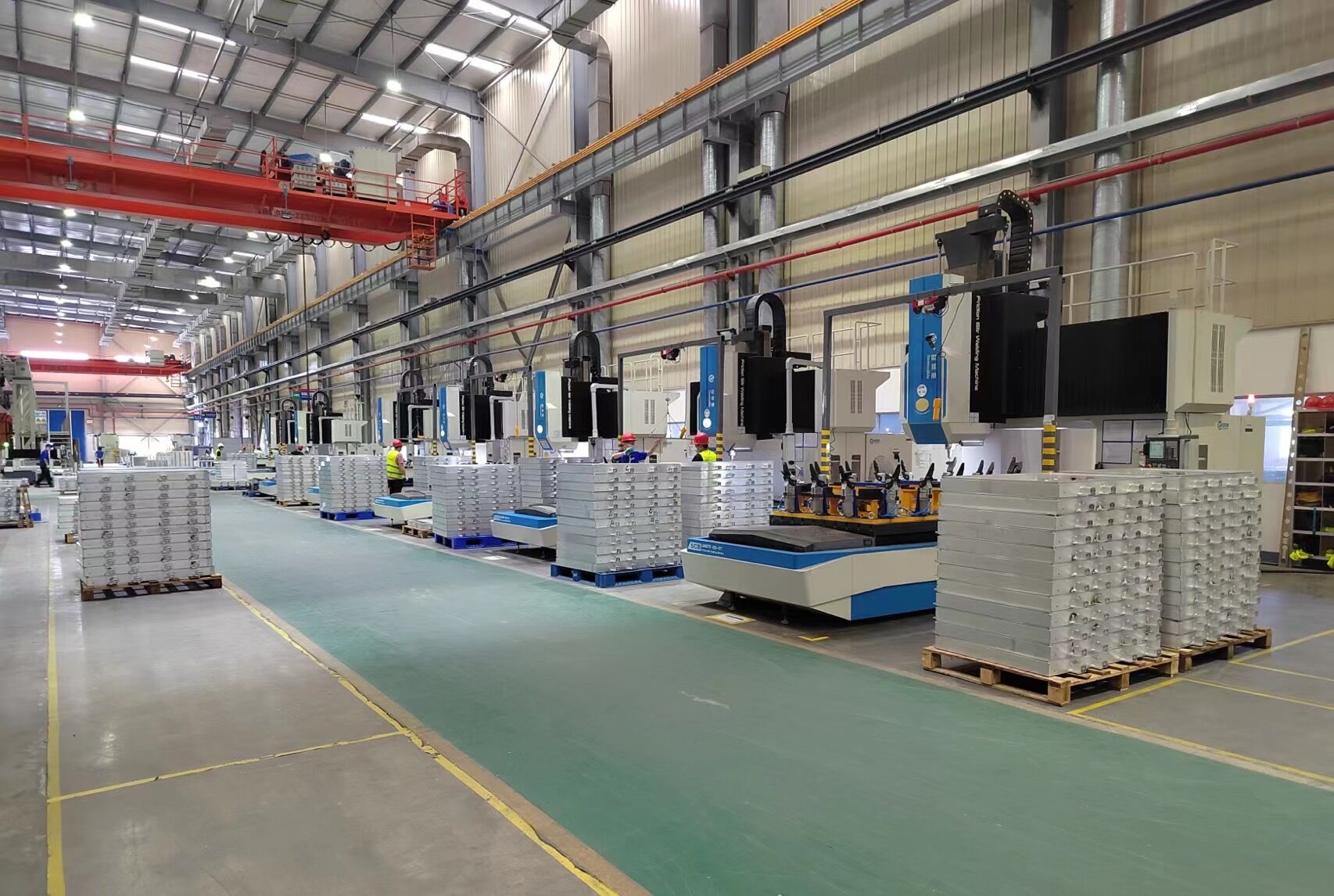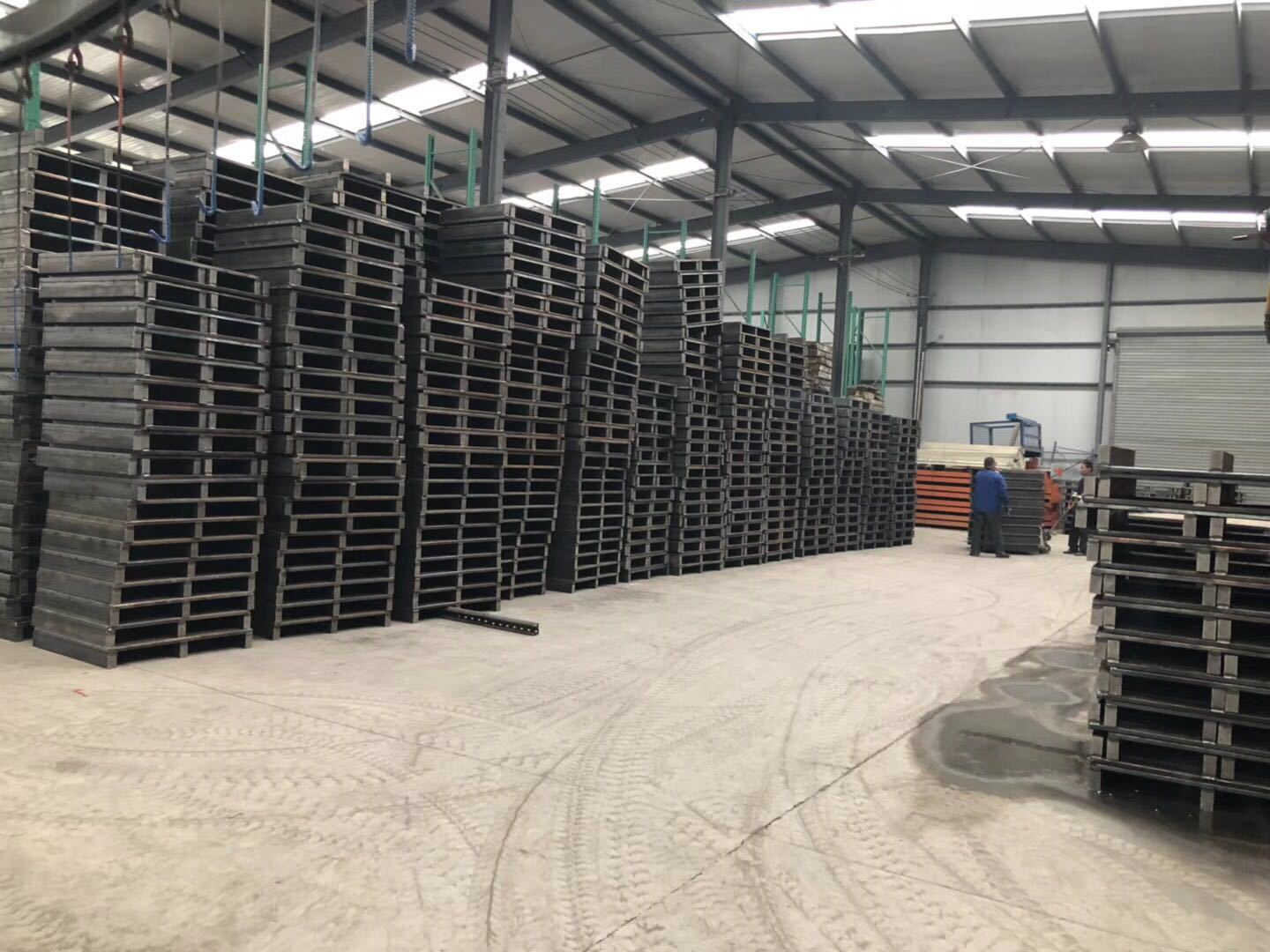The process of making metal pallets involves multiple steps, among which the use of advanced equipment such as laser cutting machines, bending machines and laser welding machines has greatly improved production efficiency and product quality. This article will discuss the production process of metal pallets in detail, focusing on the use of laser cutting machines, bending machines and laser welding machines to help readers better understand the production process of metal pallets and the application of related equipment.
1. Design and laser cutting of metal pallets
As a high-precision and high-efficiency processing tool, laser cutting machines have become one of the key equipment in the manufacture of metal pallets.
1.1 Working principle of laser cutting machine
The laser cutting machine uses the high temperature melting or ablation effect of the laser beam to accurately control the trajectory of the laser beam through the computer numerical control system to achieve the cutting of metal plates.
1.2 Laser cutting process
Before feeding the plate into the laser cutting machine, it is necessary to compile a cutting program in the computer according to the design drawings of the pallet. These programs will be input into the control system of the laser cutting machine, and the laser head can cut according to the specified path.
The advantage of the laser cutting machine is that the cutting width is very narrow, almost no post-processing is required, and the edge deformation and burr problems caused by mechanical cutting are also avoided.
1.3 Advantages of laser cutting
The laser cutting machine has many unique advantages in the production of metal pallets. First, the laser cutting machine has extremely high precision, which can ensure that the cutting size of each component of the pallet is consistent, thereby ensuring the precise matching of the pallet after assembly. Secondly, the cutting surface of the laser cutting machine is smooth and flat, and no further polishing or deburring is required, which reduces production time and cost. In addition, the laser plate cutting machine can flexibly adapt to metal sheets of different thicknesses and has strong material adaptability.

2. Bending process and application of bending machine
After the cutting of each component of the metal pallet is completed, the next step is the bending process. As an important processing equipment, the bending machine is mainly used to bend the metal sheet into the required shape according to the design requirements for easy assembly.
2.1 Working principle of bending machine
The bending machine bends the metal sheet into a specific angle through the upper and lower molds and hydraulic or mechanical power. According to different needs, the bending machine can bend multiple times to achieve complex geometric shapes.
2.2 Bending process
The bending machine applies pressure to plastically deform the metal sheet to obtain the required angle and shape. In the production of metal pallets, common bending operations include edge bending, support point bending and rib bending.
2.3 Difficulties in bending process
The key to the bending process is to control the deformation and angle accuracy of the metal sheet. Especially for thin plate materials, bending is prone to "springback" phenomenon, that is, after unloading, the bending angle of the metal sheet will retreat, so it is necessary to consider appropriate springback compensation during design.
3. Laser welding: the final splicing of metal pallets
In the manufacture of metal pallets, laser welding machines have gradually replaced traditional welding methods and become an efficient and high-quality welding method.
3.1 Working principle of laser welding machine
Laser welding machine is a method that uses a high-energy-density laser beam to heat the metal to the melting point, partially or completely melt the metal and form a welded joint. The advantage of the laser welding machine is that it can accurately control the heat input of the welding area, and the heat-affected area generated during the welding process is small, thereby avoiding material deformation or performance degradation caused by overheating.
3.2 Laser welding process
The laser welding machine irradiates the laser beam on the welding part through high-speed scanning and precise control, quickly heating the metal surface and generating a molten pool. As the laser head moves, the molten pool gradually solidifies, and finally forms a solid welded joint.
The process of the laser welding machine requires a high degree of precision control to ensure the strength and quality of the welded joint.
3.3 Advantages of laser welding
Laser welding machines have many unique advantages over traditional welding methods such as gas shielded welding and arc welding.
First, the laser welding machine has very high precision and can weld in a very small range, which is suitable for metal pallet structures with high precision requirements.
Second, the heat affected zone of the laser welding machine is small, which can effectively avoid material deformation or performance degradation caused by high temperature.
Finally, the weld of the laser welding machine is beautiful and smooth, and the welding quality is stable and reliable, which can reduce the later finishing and rework.

4.Conclusion
The production process of metal pallets is a precise and complex project involving multiple process links. Through the application of advanced equipment such as laser cutting machines, bending machines and laser welding machines, the production efficiency and quality of metal pallets have been significantly improved.

